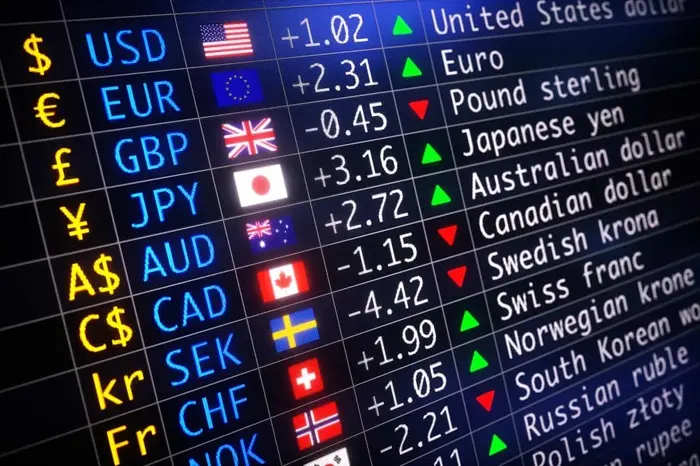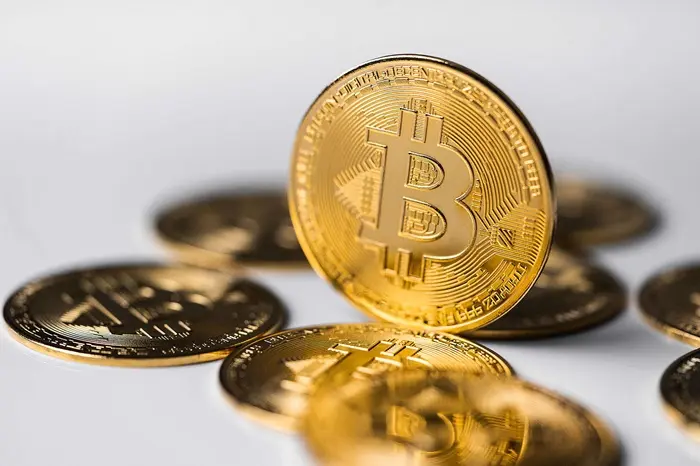In the world of digital payments, PayPal has long been a leader, offering services that allow individuals and businesses to send and receive money online. Over the years, PayPal has expanded its offerings to include a range of financial products, one of the most recent being PayPal USD. PayPal USD is a stablecoin pegged to the U.S. dollar, designed to provide users with a more efficient way of transacting within the PayPal ecosystem. But what exactly is PayPal USD, and how does it work? This article will explore the details of PayPal USD, its features, and how it fits into the larger world of digital currencies and payments.
Understanding PayPal USD
PayPal USD, or PayPal’s stablecoin, is a type of cryptocurrency created to maintain a stable value by being pegged to a fiat currency—in this case, the U.S. dollar. Unlike volatile cryptocurrencies like Bitcoin or Ethereum, the value of PayPal USD remains closely tied to the U.S. dollar, offering users the benefits of blockchain technology with the stability of traditional currency.
PayPal introduced its stablecoin in 2023, in collaboration with Paxos, a regulated financial institution that provides cryptocurrency services. The stablecoin is designed to make digital transactions more accessible and efficient, especially for PayPal’s extensive user base. The aim is to create a seamless integration of traditional payments and digital assets, allowing users to send, receive, and store digital dollars while minimizing the price fluctuations common in other cryptocurrencies.
How PayPal USD Works
PayPal USD operates on the blockchain, which is a decentralized, distributed ledger that ensures the transparency and security of transactions. The stablecoin is pegged 1:1 to the U.S. dollar, meaning that for every PayPal USD issued, there is an equivalent amount of U.S. dollars held in reserve. This ensures that the value of PayPal USD remains stable, unlike cryptocurrencies that can experience significant price volatility.
Transactions with PayPal USD occur in real-time and can be conducted both within the PayPal ecosystem and externally. This makes it a versatile tool for individuals and businesses that want to benefit from the advantages of digital currencies without the risk of price swings. Additionally, because it operates on the blockchain, PayPal USD transactions are generally faster and cheaper than traditional payment methods, such as wire transfers or credit card payments.
Features of PayPal USD
Stability: As a stablecoin, PayPal USD offers stability compared to more volatile cryptocurrencies like Bitcoin. The price is always pegged to the U.S. dollar, so its value does not fluctuate wildly. This makes it ideal for users who need a stable digital currency for transactions or savings.
Seamless Integration with PayPal: PayPal USD is fully integrated with the PayPal platform. Users can easily convert their PayPal balances into PayPal USD, send it to others, or use it for purchases where PayPal is accepted. This seamless integration makes it convenient for PayPal’s vast user base.
Lower Transaction Costs: One of the key benefits of using PayPal USD is the potential for lower transaction fees. Since PayPal USD operates on the blockchain, sending money across borders can be more affordable compared to traditional methods. The blockchain also reduces the need for intermediaries, which can lower transaction costs.
Security and Transparency: Transactions with PayPal USD are recorded on the blockchain, ensuring transparency and security. The blockchain’s decentralized nature makes it difficult for bad actors to manipulate the system. Additionally, PayPal partners with Paxos, a trusted regulated financial institution, to ensure that all PayPal USD is backed by actual U.S. dollars held in reserve.
Cross-Border Transactions: PayPal USD can be sent across borders as easily as within the same country. This makes it particularly useful for international transactions, where traditional methods like bank wires or credit card payments can be slow and costly.
The Benefits of PayPal USD
PayPal USD offers a range of benefits to both individuals and businesses, making it an attractive option for those looking to enhance their digital payment experience.
1. Reduced Volatility
Unlike traditional cryptocurrencies, PayPal USD offers stability because it is pegged to the U.S. dollar. Cryptocurrencies like Bitcoin are known for their price volatility, which can make them challenging to use for everyday transactions. By contrast, PayPal USD avoids these fluctuations, providing a stable digital asset for users.
2. Faster Transactions
Transactions involving PayPal USD can be processed almost instantly, unlike traditional bank transfers or wire payments, which can take several days. The use of blockchain technology enables near-instant settlement, which is beneficial for both businesses and individuals who need to transfer funds quickly.
3. Lower Fees
One of the major advantages of PayPal USD is the potential for reduced transaction fees. Traditional payment methods, such as credit card payments or bank transfers, can incur high fees, especially for international transactions. With PayPal USD, users can send money across borders with lower fees, making it a cost-effective solution for global payments.
4. Seamless Integration with PayPal Ecosystem
Since PayPal USD is fully integrated into PayPal’s ecosystem, users can easily switch between their regular PayPal balance and PayPal USD. This makes it a convenient option for those who are already using PayPal for their online transactions. Additionally, businesses that accept PayPal can start accepting PayPal USD without having to make any significant changes to their payment infrastructure.
5. Access to DeFi and Blockchain Applications
For users interested in decentralized finance (DeFi) or blockchain-based applications, PayPal USD provides an easy entry point. By using PayPal USD, users can participate in the growing world of blockchain-based finance, including lending, borrowing, and earning interest through decentralized platforms.
6. Increased Privacy and Security
Blockchain technology offers enhanced privacy and security for transactions. While PayPal is a centralized platform, the blockchain ledger used for PayPal USD transactions ensures that payments are recorded in a transparent and immutable way. This makes it difficult for malicious actors to alter transaction records.
Use Cases for PayPal USD
PayPal USD has various use cases that appeal to both consumers and businesses. Some of the primary ways it can be used include:
1. Cross-Border Payments
For individuals and businesses that need to send money across borders, PayPal USD offers a faster and cheaper alternative to traditional remittance services. PayPal USD eliminates the need for currency conversion and the high fees that often accompany international money transfers.
2. Online Purchases
PayPal USD can be used for online purchases, especially in countries or regions where cryptocurrency adoption is growing. Merchants who accept PayPal can easily integrate PayPal USD into their payment systems, offering customers an alternative to credit card payments.
3. Savings and Investments
For users who want to hold their funds in a digital format without worrying about volatility, PayPal USD provides a stable option. PayPal users can store their money in PayPal USD, knowing that it is pegged to the U.S. dollar and protected from fluctuations in the cryptocurrency market.
4. Integration with DeFi
PayPal USD opens the door for individuals to explore decentralized finance (DeFi) applications. Users can use PayPal USD to participate in DeFi protocols, such as lending and borrowing platforms, or yield farming, allowing them to earn interest on their holdings.
5. Business Payments and Payroll
For businesses, PayPal USD can streamline payments to vendors, employees, and contractors. Businesses can pay suppliers in different countries using PayPal USD, avoiding the high fees associated with traditional methods. It can also be used for employee payroll, especially for global teams, offering faster payment options than traditional bank transfers.
How Does PayPal USD Compare to Other Stablecoins?
PayPal USD is not the first stablecoin to be introduced in the market. There are several other prominent stablecoins, such as Tether (USDT), USD Coin (USDC), and Binance USD (BUSD). However, PayPal USD differs from these stablecoins in a few important ways.
Regulatory Oversight: PayPal USD is issued in partnership with Paxos, a regulated financial institution. This provides an extra layer of security and compliance compared to some other stablecoins, which may not have the same level of regulatory oversight.
Integration with PayPal: While other stablecoins can be used across various platforms, PayPal USD is designed to integrate directly with PayPal’s payment system. This gives users a more seamless experience when using PayPal for both traditional and crypto-based payments.
Familiarity: Since PayPal is one of the most widely used online payment platforms, PayPal USD benefits from the platform’s existing infrastructure and user base. For many consumers and businesses, using PayPal USD will be a familiar and comfortable experience, as they already trust PayPal for their online transactions.
Challenges and Risks of PayPal USD
While PayPal USD offers many benefits, it is not without its challenges and risks.
1. Regulatory Uncertainty
Cryptocurrency and stablecoins are still subject to evolving regulations in many jurisdictions. While PayPal USD is issued in compliance with U.S. regulations, its long-term viability could be impacted by future regulatory changes in the digital asset space.
2. Market Adoption
Despite PayPal’s large user base, widespread adoption of PayPal USD may take time. Users will need to be educated on the benefits of stablecoins, and merchants must also integrate PayPal USD into their payment systems before it can be widely accepted.
3. Security Risks
As with any digital asset, PayPal USD is subject to the risks of hacking and cybercrime. While blockchain technology offers enhanced security, there is always the possibility that bad actors could exploit vulnerabilities in the system.
Conclusion
PayPal USD is a significant step in the evolution of digital payments. It offers the benefits of blockchain technology while maintaining the stability of the U.S. dollar. With its seamless integration into the PayPal ecosystem, low fees, and faster transaction speeds, PayPal USD has the potential to change the way people make digital payments. However, as with any new technology, its success will depend on regulatory developments and market adoption.
As the digital payments landscape continues to evolve, PayPal USD could play an increasingly important role in shaping the future of global finance. For individuals and businesses looking for a stable, secure, and efficient way to transact in the digital world, PayPal USD offers an attractive alternative to traditional payment methods.
































